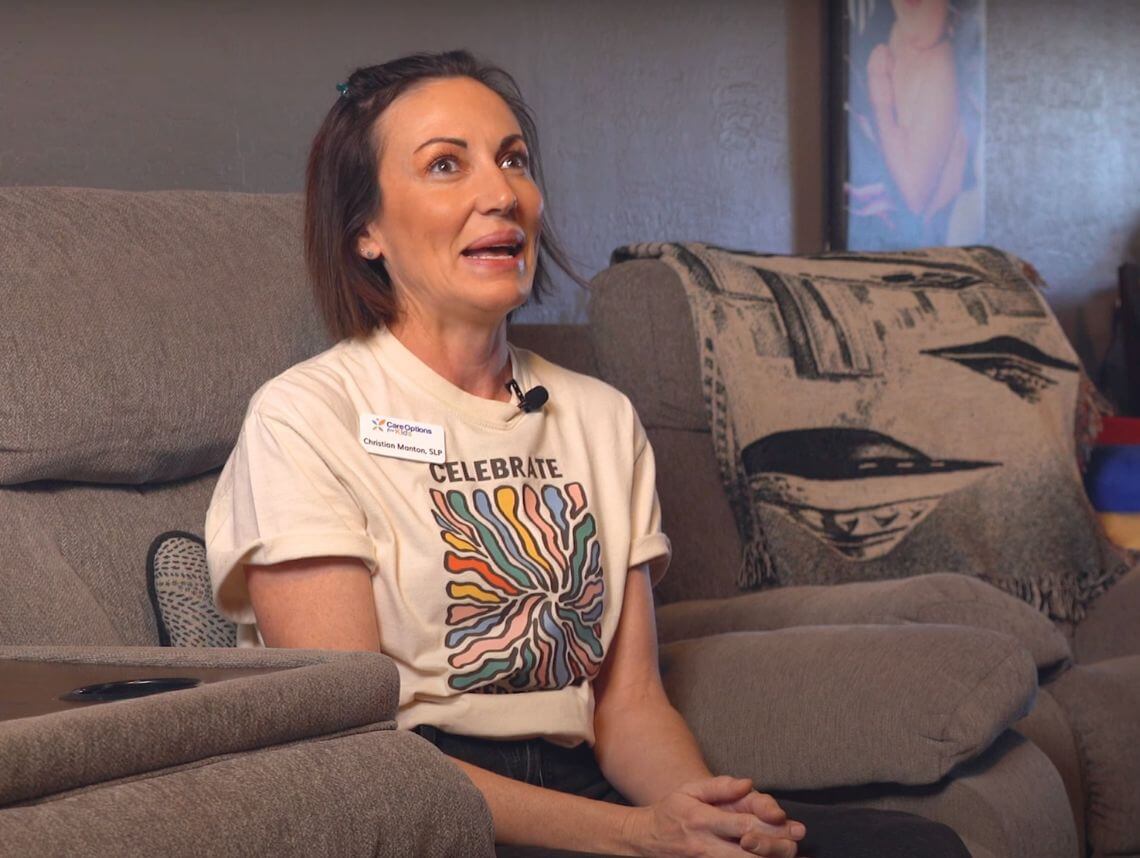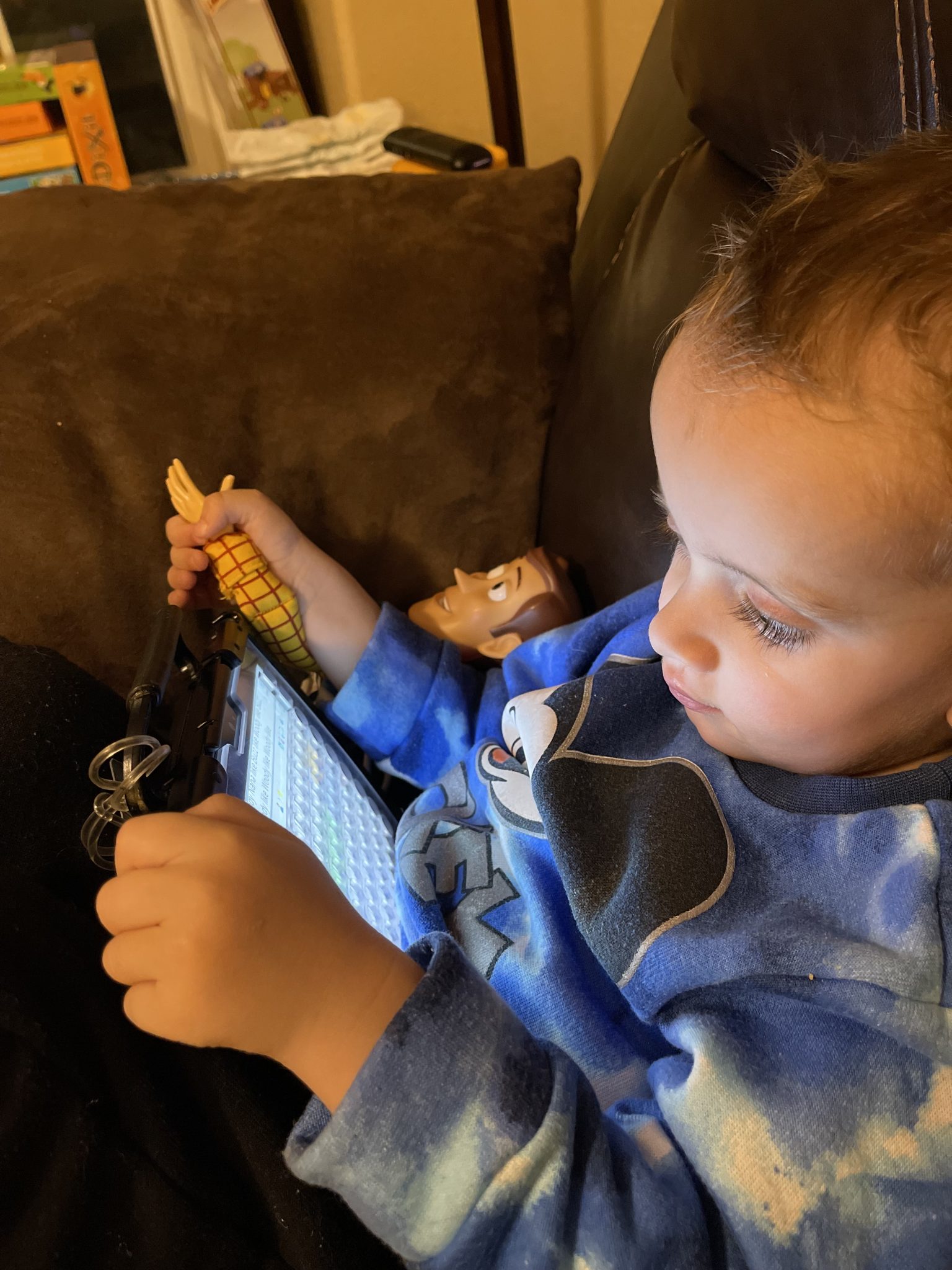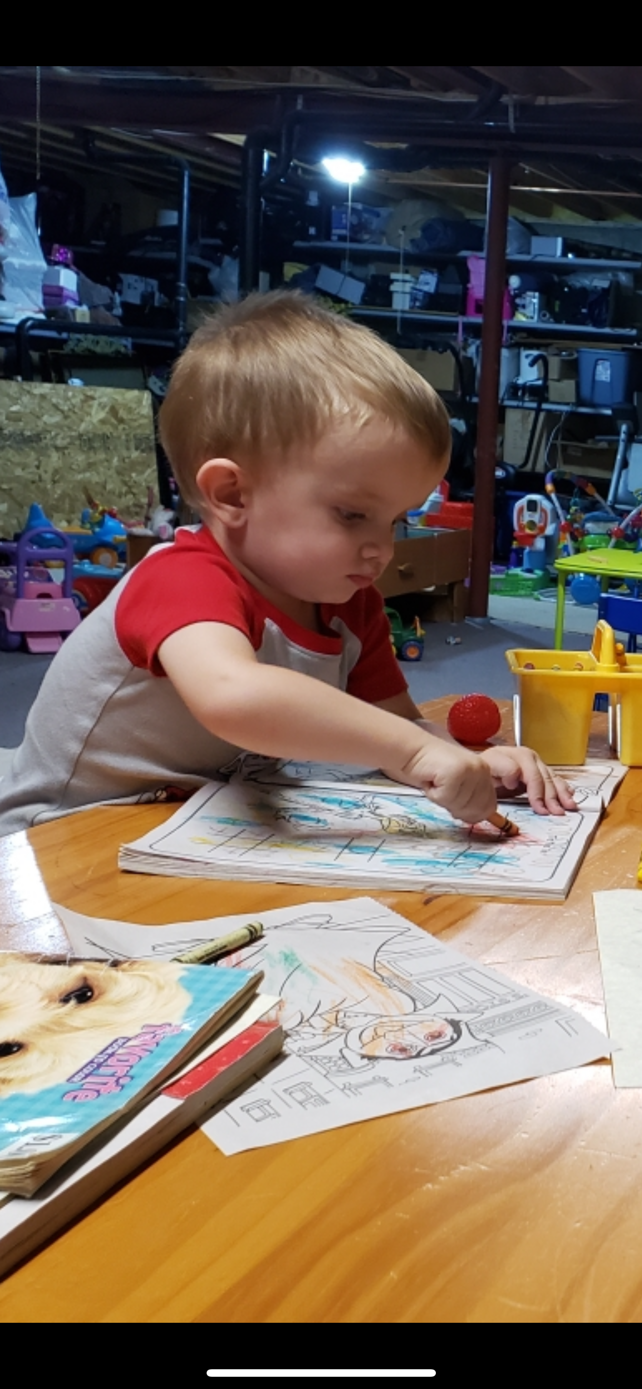Solace Blog
- Activities19
- Autism & Behavioral4
- Community154
- Early Intervention71
- Events & Giving Back20
- Extraordinary Kids22
- Family Caregiver4
- Home Care Therapy60
- News92
- Parent Articles83
- Patient Testimonial21
- Pediatric Therapy76
- Pediatric Therapy Career46
- Private Duty Nursing1
- School-Based Services1
- Telehealth Therapy27
- Tips & Advice66

From School To Home: Christian’s Shift To Impactful Therapy
Speak, Listen, Connect: 6 Communication Strategies for Therapists
Your 5-Minute Mindfulness Break: 5 Simple Ways to Recharge Between Therapy Sessions
The Transformative Power of Occupational Therapy: Peter Leypold’s Journey
Connecting Hearts and Homes: A Deep Dive into Pediatric Home Health with Solace Pediatric Healthcare

Dylan is Progressing Extremely Well With Robust AAC System
Two-year-old diagnosed with autism and a severe speech delay has expanded his vocabulary to 50+ words
Augmentative and Alternative Communication (AAC) refers to tools that support a person who has difficulties communicating using speech. Temporary users are individuals who experience a stroke, traumatic brain injury, or ALS, while long-term users are those with congenital disorders or disabilities such as autism, cerebral palsy, or severe childhood apraxia of speech.
AAC Communication
The fundamental goal of AAC is to enhance users’ communication abilities and expand their vocabularies. AAC is divided into three categories.
- High-tech: using an app on an iPad or tablet to communicate or amplifiers and devices with pre-recorded messages
- Low-tech: picture symbols, drawing tools, communication boards, picture books, etc. Low-tech devices include a limited number of ‘static’ displays that cannot generally be changed.
- No tech: sign language, gestures, facial expressions and body language
Two-year-old Dylan B. was diagnosed with autism and a severe speech delay. For the past six months, speech-language pathologist Kieva D. has been working with Dylan to improve upon his expressive language skills, and the effectiveness and efficiency of his communication.
“We asked many questions regarding studies, science and proven therapy options, as well as support with applications and other resources for Dylan. Kieva has been a teacher, therapist, model, counselor and social worker for us. It’s been much appreciated,” said Sandra, Dylan’s caregiver.
When Dylan first began therapy services he had a few home signs for “all done,” “more,” and “help” that he used to communicate, but they were mostly used inconsistently. Through the use of a speech-generating device, he’s been able to acquire more language at a rapid rate and is now at a point where he is sequencing 2-3 word sentences for spontaneous communication.

“The device is just one component to his overall system of communication. His system for communication right now includes the speech-generating device, home-signs, low tech picture symbols and emerging vocalizations/speech that we continue to support at the same time,” adds Kieva.
Sandra incorporates different levels of the AAC prompting hierarchy and other positive communication partner behaviors. Dylan uses his AAC device to tell her that he wants to “watch TV,” and when asked what he wants to watch, he’s able to tell her.
“Sandra’s ability to use positive communication partner strategies has been a critical element to Dylan’s progress so far. Her ability to ask open ended questions, paired with pause time, and using different cueing strategies is remarkable in building Dylan’s independence, and intrinsic motivation around communication,” adds Kieva.
Dylan’s Progress to Date
“Dylan wants to learn, having him go from labeling and pointing to putting together two-word sentences and even requests has been the best. He has many signs and is communicating with pictures and pointing, but to hear him and encourage him to challenge himself to develop more dialogue has been a blessing,” said Sandra.
“It sounds simple, but for this two-year-old to be able to sequence his own messages and engage in a two-turn conversation/interaction is a huge win for him. Dylan is using real, generative language on a very robust AAC system. He’s a great example that shows just how capable even our youngest clients can be when using robust AAC systems,” adds Kieva.
“I have had an overall amazing experience…Solace has been responsive and helpful when I needed questions answered. The knowledge and ability to place me at ease that I am doing all I need to do to support Dylan has been tremendous. We also hope that we will be adding physical therapy from Solace in the near future,” adds Sandra.

The Solace Difference
Our speech-language pathologists (SLPs) work with children of all ages in-home or via telehealth therapy to assist with speech, receptive language, expressive language, and feeding and swallowing disorders. Our specialized pediatric SLPs provide skilled, evidence-based, patient-focused care. We provide therapy in a nurturing environment that promotes those we serve to grow, learn, play and thrive while receiving care in the security of their home. Our SLPs work with the family, physicians and specialists to create the best individualized plan for your child.
How to Refer Your Child
Solace Pediatric Healthcare is the leading provider of pediatric nursing, family caregiver, occupational, physical, speech and feeding therapy services. Since 2005, our clinicians have provided pediatric care to children from birth to 21 years of age.
At Solace, we’ve instilled a culture built on trust, communication, teamwork and accountability. Our mission is to provide pediatric clinical services to help children and families live their best lives.
- I want to refer my child for an Evaluation/Therapy. If you know you would like to speak to our patient advocate to discuss scheduling an initial evaluation with a licensed pediatric therapist, simply complete and submit the Referral Form so we may contact you. Please provide as much information on the secure/encrypted form as possible as it is required to begin the process. We do accept Medicaid and most insurances.
- I Want to Be Contacted. If you would like to speak with our patient advocate for more information prior to submitting a Referral Form, simply complete the Contact Me Form and submit.
- If you prefer to contact us to discuss your child, please call our team. You can reach us by phone at: (Denver) 303.432.8487; (Colorado Springs) 719.623.5463; (Northern Colorado) 970.775.8476; and (Pueblo) 719.695.4535.
Reference: American Speech-Language-Hearing Association
Share this Post